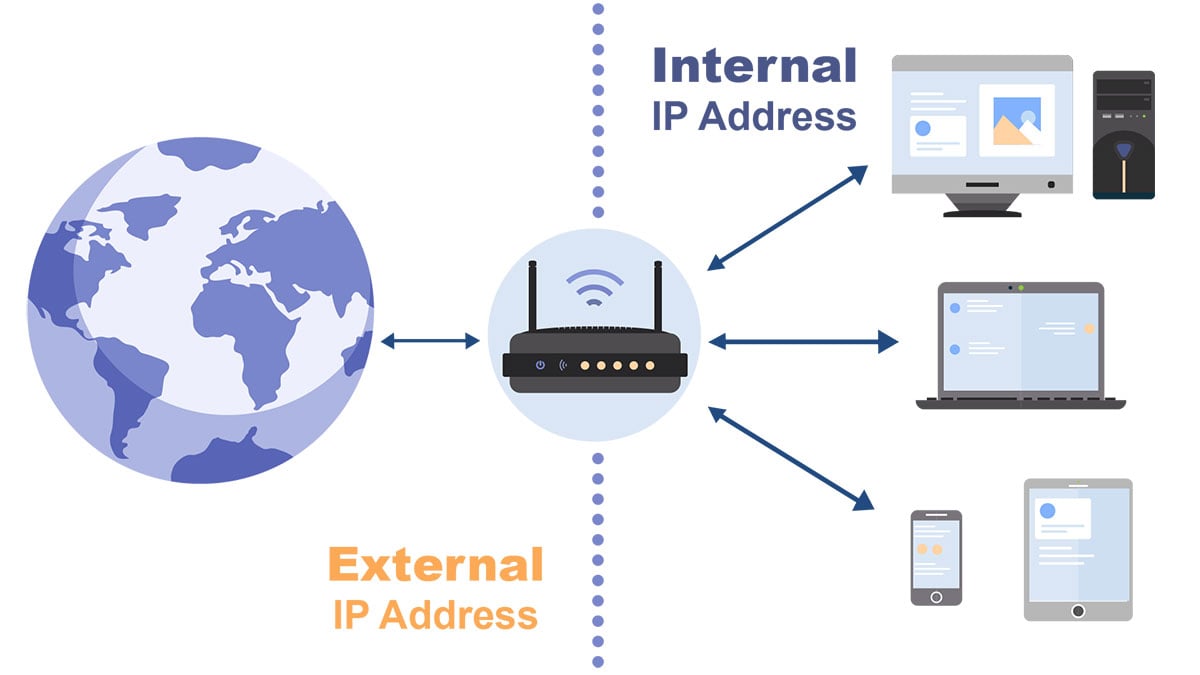You are here
225.15.225.80 Reserved IP Address
 Icon / Image Meaning Table
Icon / Image Meaning Table
225.15.225.80 is a reserved IP address reserved by the IP address management agency and not assigned as a public or private IP. The reserved IP is generally used for special purposes, such as software, private networks, hosts, subnets, documents, conversions, multicast, broadcast, local communication, loopback, relay, link, mapping, testing and future usage. Non-professional users are rarely involved.
Content:
- 1. What is 225.15.225.80?
- 2. Is 225.15.225.80 a public IP address or a reserved IP address?
- 3. Can 225.15.225.80 be used as private IP address of a router?
- 4. What is the special purpose of 225.15.225.80?
- 5. Can I find out the geographic location of the IP address 225.15.225.80?
- 6. How to find out the administrator of 225.15.225.80?
1. What is 225.15.225.80?
225.15.225.80 is an IP address, it represents a device on the Internet.
IP address is used to identify the device that sends or receives data in cyberspace and is represented by a string of numbers.
The number can be displayed in binary, decimal, hexadecimal, etc., as shown in the figure below, with decimal being the most common.
 Description of IP Address in Binary, Decimal and Hexadecimal
Description of IP Address Class A/B/C/D/E and Network ID, Host ID
Description of IP Address in Binary, Decimal and Hexadecimal
Description of IP Address Class A/B/C/D/E and Network ID, Host ID
Notice:
A correct IP address has 4 numbers and connected by dot, such as there only 3 numbers in 225.15.225, and 5 numbers in 225.15.225.80.1, they are not correct IP addresses;
The size of the 4 decimal numbers ranges from 0 to 255. If any number exceeds this range, such as 225.15.225.256, it is not a correct IP address.
Sometimes, dot will be replaced by space or hyphen, e.g. 225-15-225-80,225 15 225 80, but generally it is represented by dot, e.g. 225.15.225.80;
If you want to learn more about IP address, please check: What is IP address?
2. Is 225.15.225.80 a public IP address or a reserved IP address?
225.15.225.80 is a reserved IP address, not a public IP address, and cannot be directly accessed on the Internet.
In addition to allocating public IP addresses, the IP address allocation agency has reserved some IP addresses for special usage. These reserved IP addresses are listed in the table below.
IPv4 reserved addresses:
| Address block | Address range | Number of addresses | Scope | Description |
|---|---|---|---|---|
| 0.0.0.0/8 | 0.0.0.0–0.255.255.255 | 16,777,216 | Software | Current network (only valid as source address). |
| 10.0.0.0/8 | 10.0.0.0–10.255.255.255 | 16,777,216 | Private network | Used for local communications within a private network. |
| 100.64.0.0/10 | 100.64.0.0–100.127.255.255 | 4,194,304 | Private network | Shared address space for communications between a service provider and its subscribers when using a carrier-grade NAT. |
| 127.0.0.0/8 | 127.0.0.0–127.255.255.255 | 16,777,216 | Host | Used for loopback addresses to the local host. |
| 169.254.0.0/16 | 169.254.0.0–169.254.255.255 | 65,536 | Subnet | Used for link-local addresses between two hosts on a single link when no IP address is otherwise specified, such as would have normally been retrieved from a DHCP server. |
| 172.16.0.0/12 | 172.16.0.0–172.31.255.255 | 1,048,576 | Private network | Used for local communications within a private network. |
| 192.0.0.0/24 | 192.0.0.0–192.0.0.255 | 256 | Private network | IETF Protocol Assignments. |
| 192.0.2.0/24 | 192.0.2.0–192.0.2.255 | 256 | Documentation | Assigned as TEST-NET-1, documentation and examples. |
| 192.88.99.0/24 | 192.88.99.0–192.88.99.255 | 256 | Internet | Reserved. IPv6 to IPv4 relay (included IPv6 address block 2002::/16). |
| 192.168.0.0/16 | 192.168.0.0–192.168.255.255 | 65,536 | Private network | Used for local communications within a private network. |
| 198.18.0.0/15 | 198.18.0.0–198.19.255.255 | 131,072 | Private network | Used for benchmark testing of inter-network communications between two separate subnets. |
| 198.51.100.0/24 | 198.51.100.0–198.51.100.255 | 256 | Documentation | Assigned as TEST-NET-2, documentation and examples. |
| 203.0.113.0/24 | 203.0.113.0–203.0.113.255 | 256 | Documentation | Assigned as TEST-NET-3, documentation and examples. |
| 224.0.0.0/4 | 224.0.0.0–239.255.255.255 | 268,435,456 | Internet | In use for IP multicast. (Former Class D network). |
| 240.0.0.0/4 | 240.0.0.0–255.255.255.254 | 268,435,455 | Internet | Reserved for future use. (Former Class E network). |
| 255.255.255.255/32 | 255.255.255.255 | 1 | Subnet | Reserved for the "limited broadcast" destination address. |
The reserved addresses for IPv6 are not listed here, please see: Reserved IP addresses - Wikipedia.
3. Can 225.15.225.80 be used as private IP address of a router?
225.15.225.80 generally cannot be used as a private IP address of a router.
IP addresses can be classified as private IP addresses, public IP addresses and reserved IP addresses.
- Public IP addresses: The overwhelming majority of IP addresses are public addresses and need to apply for registration with the international Internet administrative agency.
- Private IP addresses: 3 IP address segments are reserved in the IPv4 address protocol as private addresses for internal use by the organization.
- Reserved IP Addresses: There are also some reserved addresses, which are used as private IP address space or for special purposes such as internal LAN.

From the screenshot above, you can see the different locations and utilizations of public IP address and private IP address.
From the definition of IANA, the private IP address is also classified as a reserved IP address. There are mainly 3 IP segments:
| Class | Address range | Number of addresses | Number of networks |
|---|---|---|---|
| Class A | 10.0.0.0 ~ 10.255.255.255 | 16777216 | 1 Class A |
| Class B | 172.16.0.0 ~ 172.31.255.255 | 1048576 | 16 Class C |
| Class C | 192.168.0.0 ~ 192.168.255.255 | 65536 | 256 Class C |
Our website judges that the above 3 IP segments are classified as private IP addresses. The IP addresses of these 3 IP segments can be used for routers, and other special IP addresses are classified as reserved IP addresses. Therefore, 225.15.225.80 is not the private IP address used by the router.
Note: If 225.15.225.80 is forcibly used as the router IP address, it may cause IP conflicts and other situations that makes the router cannot be used normally.
4. What is the special purpose of 225.15.225.80?
The IP address 225.15.225.80 belongs to the 224.0.0.0/4 IP segment in CIDR format. The starting IP and ending IP are 224.0.0.0–239.255.255.255. This IP address segment has a total of 268,435,456 IP addresses, the scope is Internet, In use for IP multicast. (Former Class D network).
5. Can I find out the geographic location of the IP address 225.15.225.80?
Short answer: No. The IP address geographic location of 225.15.225.80 cannot be found.

Three types of IP addresses correspond to:
- Public IP address: Used on the Internet, you can find out where the IP address belongs to, generally accurate to the city level.
- Private IP address: Used in the internal network, there is no corresponding geographic location, and the IP address geolocation cannot be found.
- Reserved IP address: Used for special purpose, there is no corresponding geographic location too, and the IP address geolocation cannot be found.
6. How to find out the administrator of 225.15.225.80?
You can use Whois lookup to find out the administrative agency of an IP address, and even the phone number and other contact information of the administrator.

Using the Whois tool to look up 225.15.225.80 will yield a lot of information, and we pull out the main information as follows:
- Administrative agency: MCAST-NET
- Description:Addresses starting with a number between 224 and 239 are used for IP multicast. IP multicast is a technology for efficiently sending the same content to multiple destinations. It is commonly used for distributing financial information and video streams, among other things. A full list of IPv4 multicast assignments can be found at: http://www.iana.org/assignments/multicast-addresses A document describing the policies for assigning multicast addresses can be found at: http://datatracker.ietf.org/doc/rfc5771
- Country/Region:
- Address: 12025 Waterfront Drive Suite 300 Los Angeles CA 90292 United States
- Administrator:Internet Assigned Numbers Authority
- Tel: +1-310-823-9358
- E-mail: res-ip@iana.org
The Whois lookup tool is designed to allow people to find the responsible agency and administrator when there is network problem. At present, Whois tools are widely used in the network technical level, for example, if Telecom Internet service providers find there is network problem, they can quickly notify the relevant responsible person to diagnose and deal with it. In addition, if there is network resources abuse, such as a lot of spam from a certain IP address, they can also contact the person in charge of spam complaints to deal with it.
More articles:
 IP
IP

